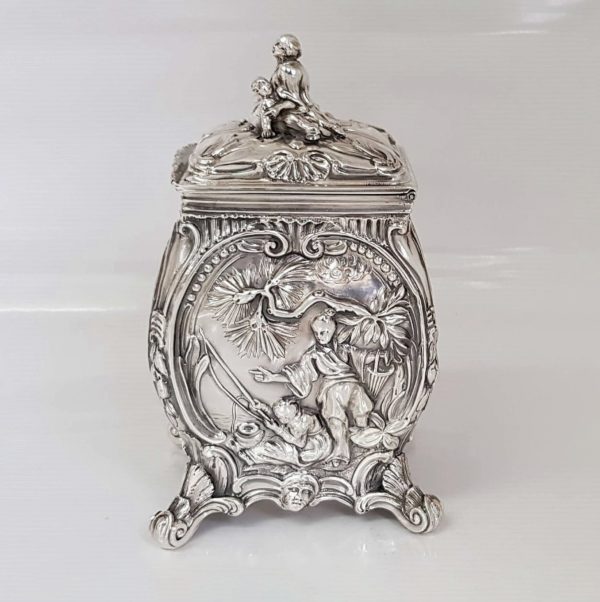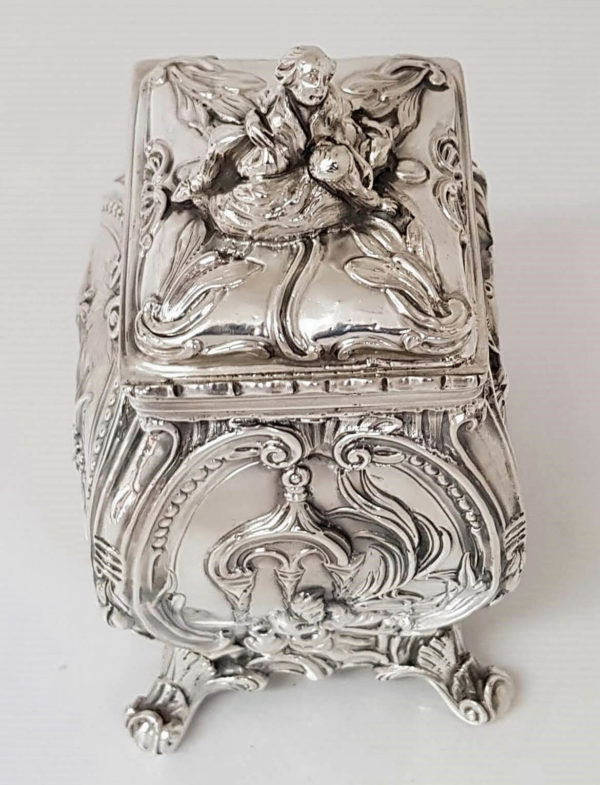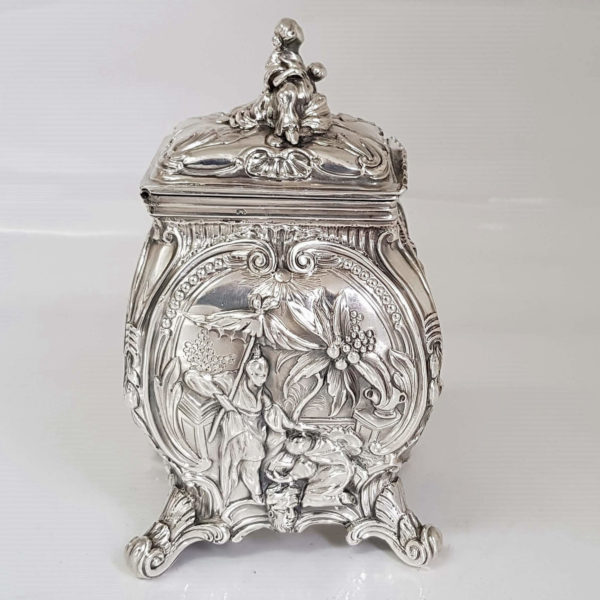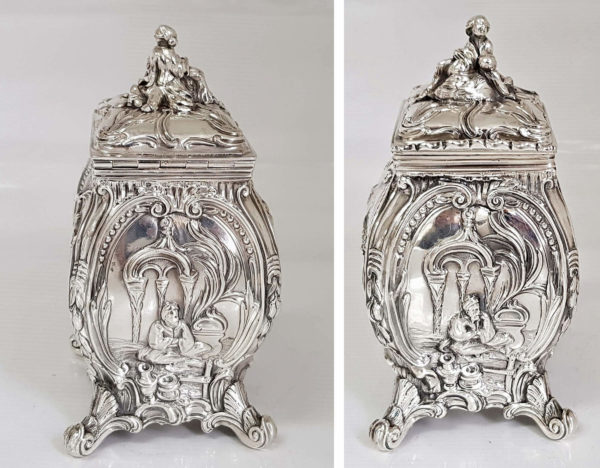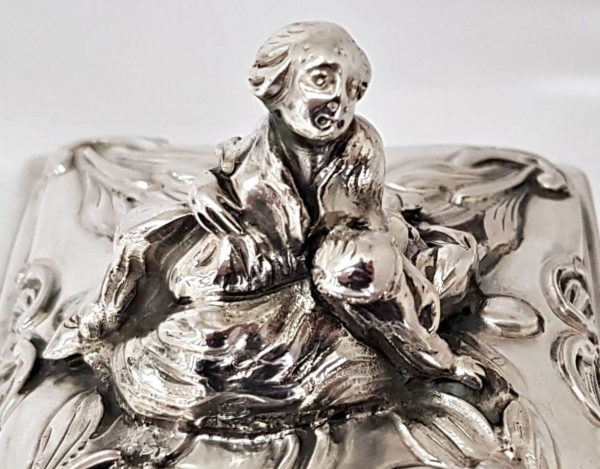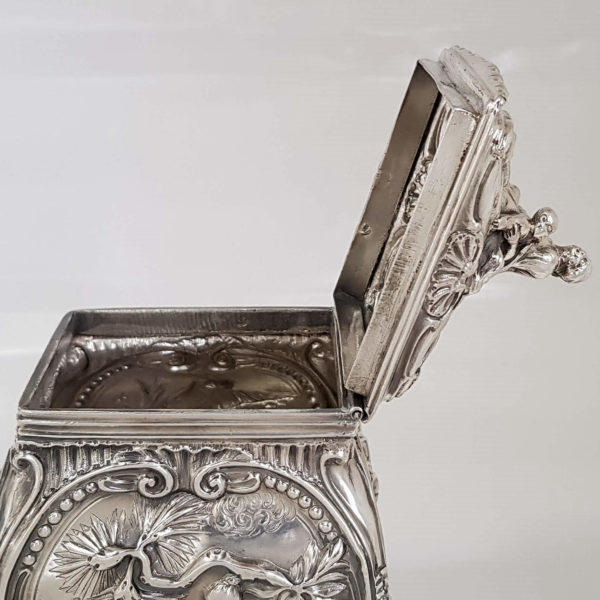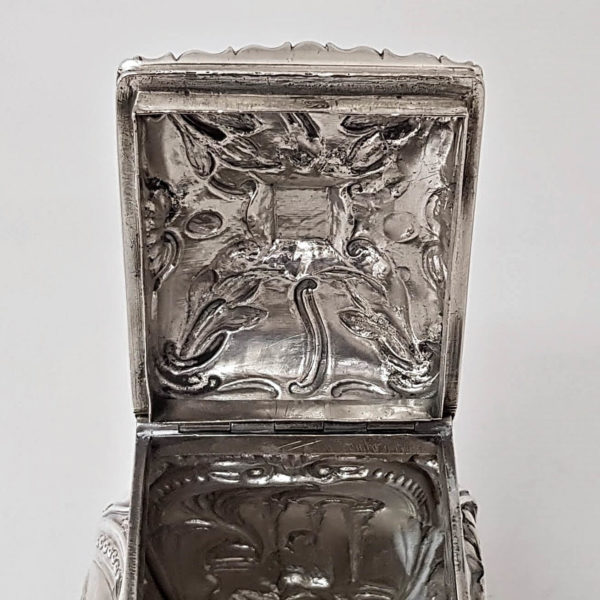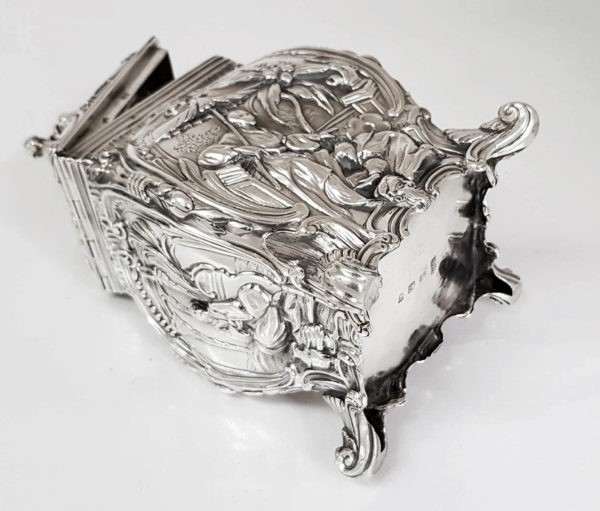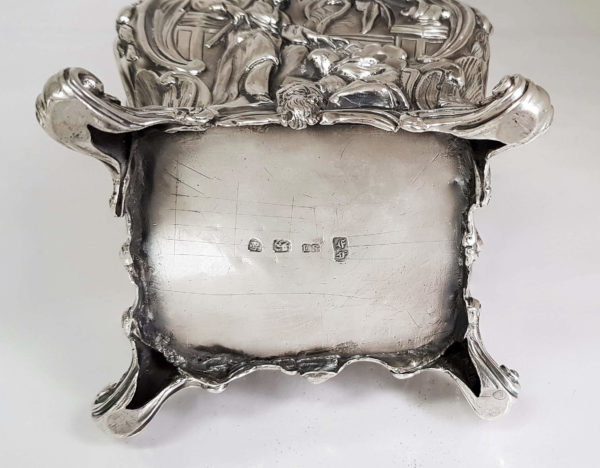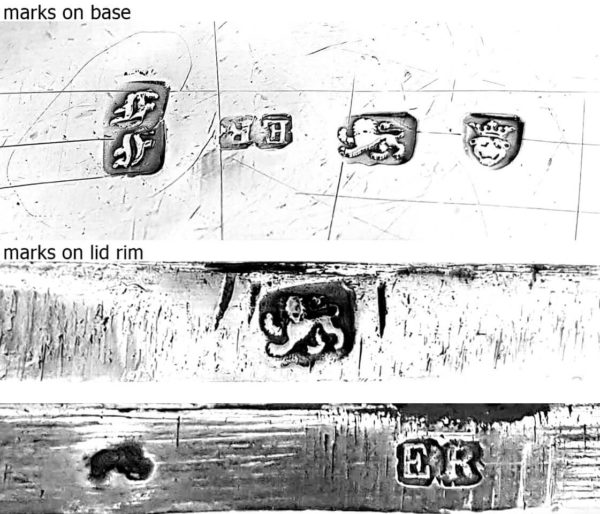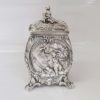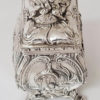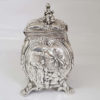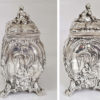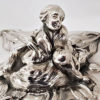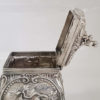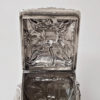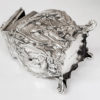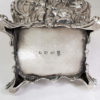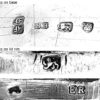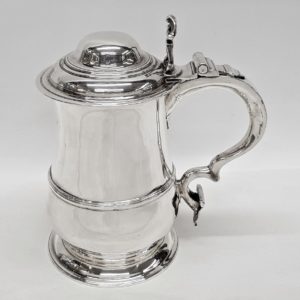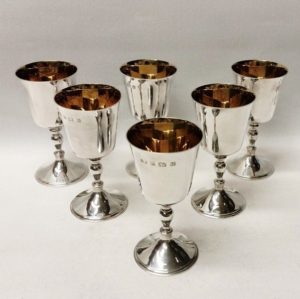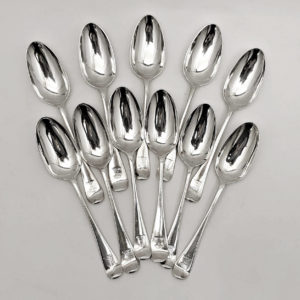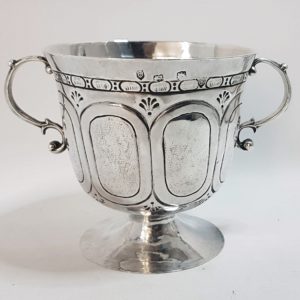George III Silver Chinoiserie Tea Caddy
SOLD
Stock: 9755
Date: 1761
Maker: Emick Romer
Country: England
A fine example of an antique silver caddy box of bombe form with a side hinged lid and standing on...
Description
Description
A fine example of an antique silver caddy box of bombe form with a side hinged lid and standing on scrolling feet. The sides are embossed with charming scenes of Chinese daily life. The lid finial is in the form of a mother and baby.
Weight 366 grams, 11.7 troy ounces.
Height 16cm. Body measurements at maximum – width 9.2cm, depth 8cm.
London 1761.
Maker Emick Romer.
Sterling silver.
View our article on chinoiserie silver
Marks. Stamped underneath with a full set of English silver hallmarks (date letter is double struck), lion and maker’s mark to the rim of the lid.
Literature. A Tea Caddy is a box, jar, canister, or other receptacle used to store tea. The word is believed to be derived from “catty”, the Chinese pound, equal to about a pound and a third avoirdupois. The earliest examples that came to Europe were Chinese tea canisters in blue and white porcelain with china lids or stoppers. Tea in the early 18th Century was expensive, and also there was a tax on tea, so early tea caddies were small and made in precious materials such as silver, shagreen or tortoiseshell which reflected the valuable contents within.
Some of the earliest silver examples have sliding bases (or tops) and the cap was used for measuring the tea. By the mid 18th century matching sets were available, with two caddies (for green and black tea) and a sugar bowl, all fitted into a wooden or shagreen case, often with silver mounts. During the late 1700’s the locking silver tea caddy was introduced with its own key which the lady of the house kept on the chatelaine around her waist. Double locking tea caddies in silver are rare.
Condition
The silver box is in very good condition. The hinge works well.
Maker Information
Maker: Emick Romer
Emick Romer, son of Michel Michelson Romer goldsmith of Oslo in Norway. Emick lived in Bragernaes and was apprenticed in 1749. It is thought that that Emick left Norway some time after 1751 and the mark attributed to him was entered after 1758. Romer appears to have been supplying sugar and cream baskets to Parkin and Wakelin 1770-1 and his mark appears on a number of pierced epergnes circa 1765-75.
Our Guarantee
Customer satisfaction is our primary concern
All silverware on our website is checked thoroughly prior to offering it for sale and every product listing contains a condition report and details of the silver hallmarks.
All items offered on our website include:
- Free Shipping Worldwide
- Tracked and Insured
- 14 day no quibble money back guarantee
- We are accredited members of LAPADA and conform to their strict professional standards
- We dispatch 1-3 days after receiving cleared payments
More detailed information about deliveries, returns and how to pay is available in the Help section at the bottom of this page.
